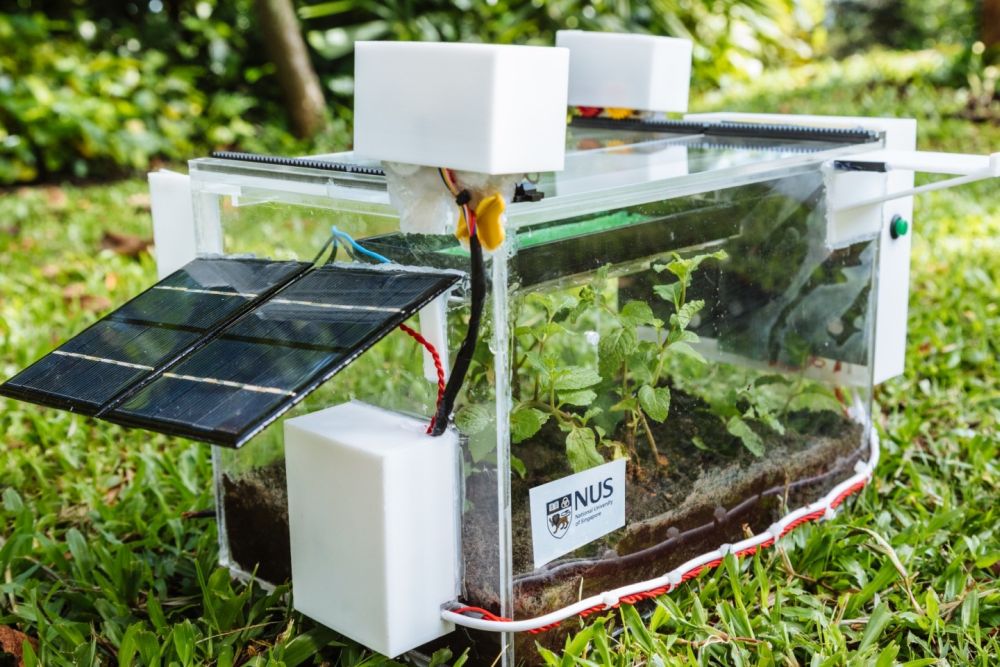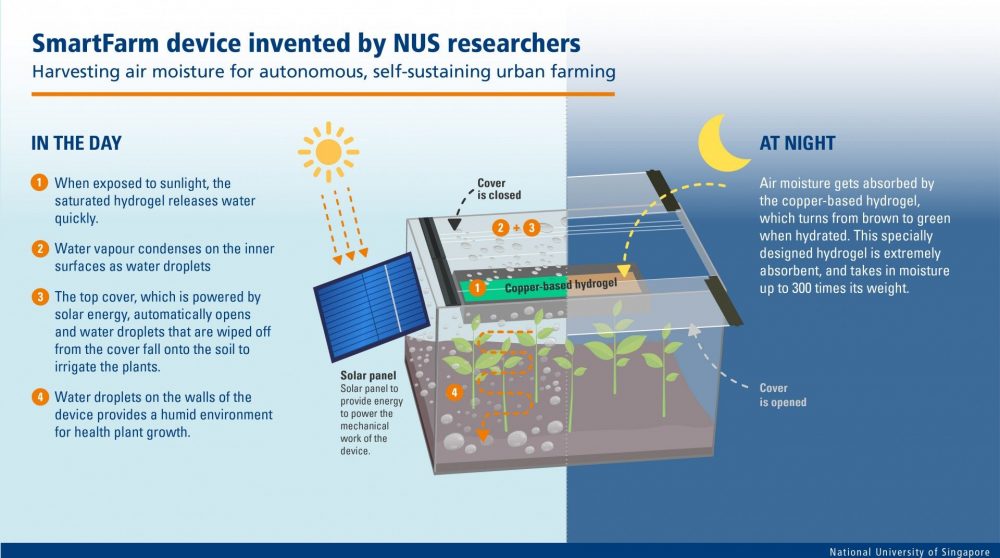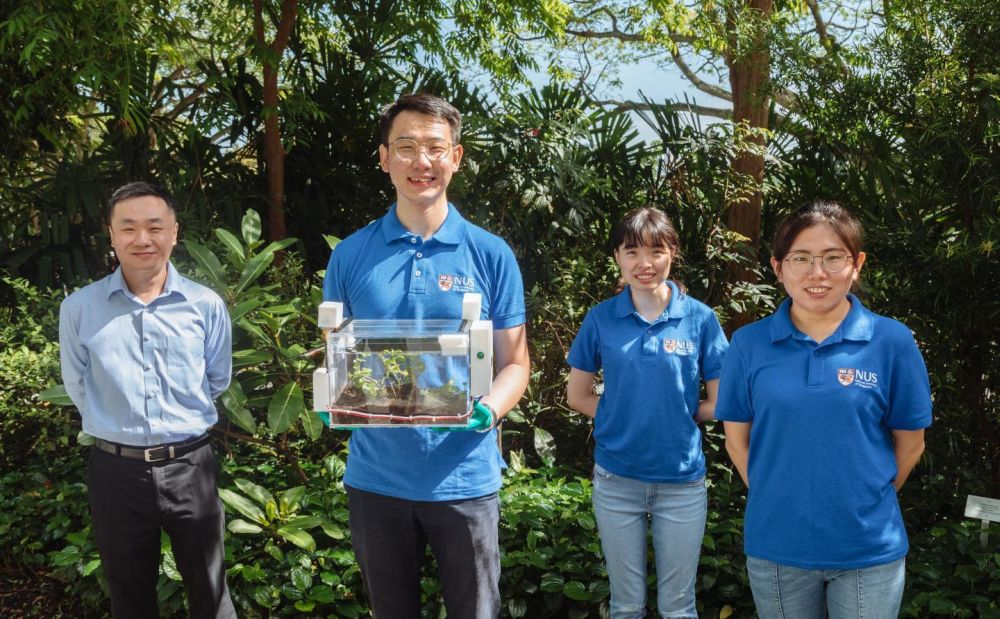NUS SmartFarm Device Harvests Water Drawn from Air to Grow Plants Using Hydrogel
A team of National University of Singapore (NUS) researchers has created a SmartFarm device that absorbs moisture from the air at night and releases it in the day for autonomous, self-sustaining irrigation and urban farming.
This simple solution address two crucial world problems – water scarcity and food shortage. Nearly, 1.1 billion people worldwide have lack access to water. Many of the water systems that keep the ecosystem running have become stressed with increasing populations and changing climate. More than half of the world’s wetlands have also dried up amid shifting rainfall patterns.

The current prototype is a miniature proof-of-concept model | Image: NUS
A billion people across the world experience the effects of food scarcity. Many countries are experiencing increasing levels of acute food insecurity, reversing the development gains. COVID-19 has further led to severe and widespread global food insecurity. This solution makes the irrigation system self-sustaining without depending on a water source and also aims to solve the food insecurity issue.
Atmospheric moisture is undoubtedly an untapped source of freshwater. In this work, project leader Professor Tan Swee Ching explains that the team has created a hygroscopic copper-based material and uses it to draw moisture from the air. The material is integrated with a fully automated solar-driven device that uses the harvested atmospheric water to irrigate plants without any manual intervention.

‘SmartFarm’ is a solar-powered, fully automated device that uses an advanced hydrogel to harvest air moisture for autonomous, self-sustaining urban farming. | Image: NewAtlas
The key component of this system is the specially designed copper-based hydrogel that is extremely absorbent and captures humidity up to 3 times its weight. After collecting enough moisture, the hydrogel changes color from brown to dark green and finally light green once it is fully saturated. 1 gram of copper-based hydrogel can release 2.24 grams of water in an hour.
The NUS tested the quality of water and found that it met the World Health Organization standards of drinking water. The cover periodically opens during the day, with condensed water trickling down along the inside edges of the box, running into the soil. The remaining water on the walls provides a humid environment for the plant’s healthy growth.
As a proof-of-concept, the NUS researchers used the device to cultivate Ipomoea Aquatica (Kangkong) – a popular vegetable in Southeast Asia.

NUS researchers with SmartFarm model | Image: NUS
The team has also forged a collaboration with HI-SEAS to experiment with the application of hydrogel to control humidity in extra-terrestrial plant growth chambers and other potential space applications.
The NUS team proposes that SmartFarm can be improved with additional functions before commercially scaling the concept. For instance, a multi-tiered structure can be designed to make the most from rooftop spaces to increase food production and air-condenser that can be added to the device for particular plants. Also, to protect plants on cloudy days, a heating system can be attached to provide sufficient thermal energy to activate the hydrogel without sunlight.
The SmartFarm concept proposed by NUS greatly helps to reduce the freshwater demand and is also sustainable for urban farming that is fully automated and uses renewable energy. It can be best adopted for rooftop farming. It is a scalable solution to alleviate the problem of water and food scarcity in the future.
Via: NewAtlas


